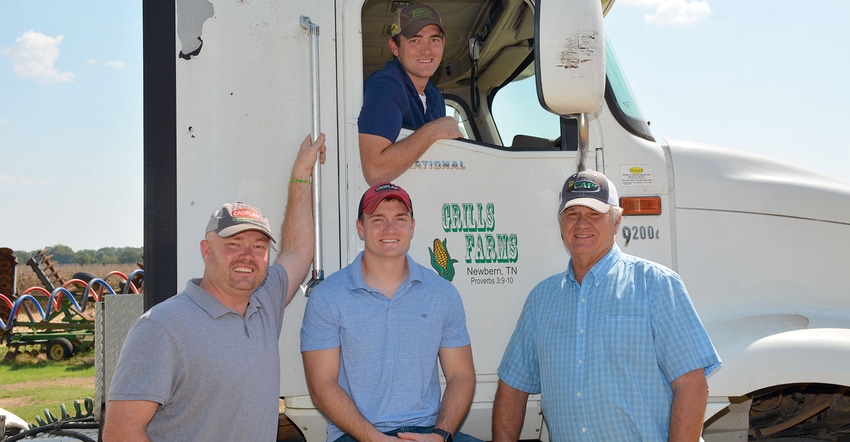
Rusty and Hunter Grills, ninth-generation corn, soybean and cattle farmers in Dyer County, Tenn., are hopeful about the 2020 season despite the unpredictability COVID-19 brings.
Rusty and Hunter said while there is much uncertainty going into this crop year, when it comes to farming, you must be ready to adjust to new circumstances.
Market concerns
"With COVID-19, everything is twisted up right now, and where the markets are going is vague at this point," Hunter said. "We were able to sell a lot of our corn for over $4 last fall, and we had high hopes for this year, but then all of this started to come up at the beginning of the year.
"One thing about farming, though, is you constantly need to adapt. There are so many things you cannot control, so you just have to go with it."
The Grills have been gathering what they need to plant in case a retailer temporarily closes its doors due to COVID-19 protocols.
"We're making sure we have everything we need to plant right now," Rusty said, "so if a retailer shuts down or a supplier has limited access, we have what we need to start planting. We cannot store enough to put a complete crop in, but we can at least get started."
Crop rotation for pigweeds
No farmer is spared weed problems, they say.
"We struggled with pigweeds last year, which have been a problem for us the past few years," Rusty said.
Crop rotation, as well as rotating herbicide products, are two of the main tools the brothers use to keep the pigweeds at bay.
"We try to make sure we rotate our corn ground," Hunter said. "We see a lot of improvement in weed control from having a continuous rotation."
The weeds they do have they try to eliminate early, before the weeds start producing seed, to prevent future weeds from sprouting.
"An ounce of prevention is better than a pound of cure," Hunter said, "especially when it comes to pigweeds."
Planting season
With a wet spring, weather affects farmers' planting schedules.
"We're behind on our burndown," Rusty said. "Tomorrow will be April 1, and we only have about 10% burned down, and we would normally like to be at least half. We can get caught up quickly if we can run the sprayer for a couple of days once the weather is favorable."
They typically like to plant about a third of their acres in corn and the rest in soybeans.
"If the ground does not dry up soon, we might need to adjust our corn acres to soybean acres instead," Hunter said.
Rusty said that they will most likely have 40% corn acres and the rest in soybeans this year.
2019, late harvest
Grills Family Farm had some of their best yields in 2019 despite a late harvest.
"We finished harvesting the 2019 crop right before Thanksgiving," Hunter said. "It was a wet fall, and we had some trouble getting in the field to harvest, but we still had some of the best yields, even with the unfortunate weather."
The Grills hope the 2020 planting season will bring another favorable harvest as well as good market prices, despite the unpredictable start to the year.
About the Author(s)
You May Also Like




